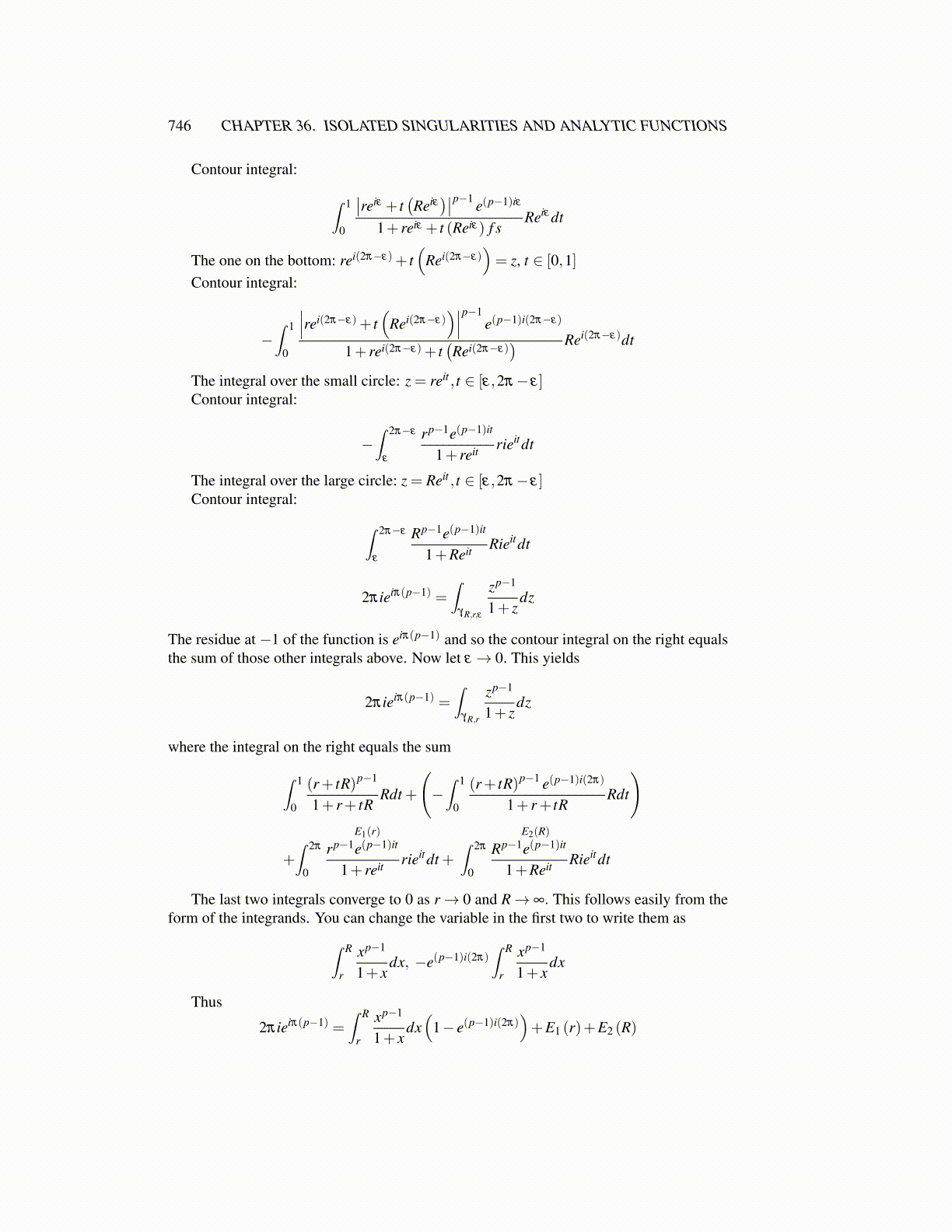
746 CHAPTER 36. ISOLATED SINGULARITIES AND ANALYTIC FUNCTIONS
Contour integral:
∫ 1
0
∣∣reiε + t(Reiε
)∣∣p−1 e(p−1)iε
1+ reiε + t (Reiε) f sReiε dt
The one on the bottom: rei(2π−ε)+ t(
Rei(2π−ε))= z, t ∈ [0,1]
Contour integral:
−∫ 1
0
∣∣∣rei(2π−ε)+ t(
Rei(2π−ε))∣∣∣p−1
e(p−1)i(2π−ε)
1+ rei(2π−ε)+ t(Rei(2π−ε)
) Rei(2π−ε)dt
The integral over the small circle: z = reit , t ∈ [ε,2π− ε]Contour integral:
−∫ 2π−ε
ε
rp−1e(p−1)it
1+ reit rieitdt
The integral over the large circle: z = Reit , t ∈ [ε,2π− ε]Contour integral: ∫ 2π−ε
ε
Rp−1e(p−1)it
1+Reit Rieitdt
2πieiπ(p−1) =∫
γR,r,ε
zp−1
1+ zdz
The residue at −1 of the function is eiπ(p−1) and so the contour integral on the right equalsthe sum of those other integrals above. Now let ε → 0. This yields
2πieiπ(p−1) =∫
γR,r
zp−1
1+ zdz
where the integral on the right equals the sum
∫ 1
0
(r+ tR)p−1
1+ r+ tRRdt +
(−∫ 1
0
(r+ tR)p−1 e(p−1)i(2π)
1+ r+ tRRdt
)
+
E1(r)∫ 2π
0
rp−1e(p−1)it
1+ reit rieitdt +
E2(R)∫ 2π
0
Rp−1e(p−1)it
1+Reit Rieitdt
The last two integrals converge to 0 as r→ 0 and R→ ∞. This follows easily from theform of the integrands. You can change the variable in the first two to write them as∫ R
r
xp−1
1+ xdx, −e(p−1)i(2π)
∫ R
r
xp−1
1+ xdx
Thus
2πieiπ(p−1) =∫ R
r
xp−1
1+ xdx(
1− e(p−1)i(2π))+E1 (r)+E2 (R)